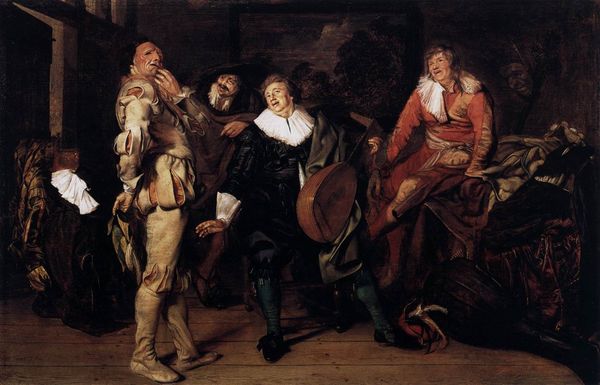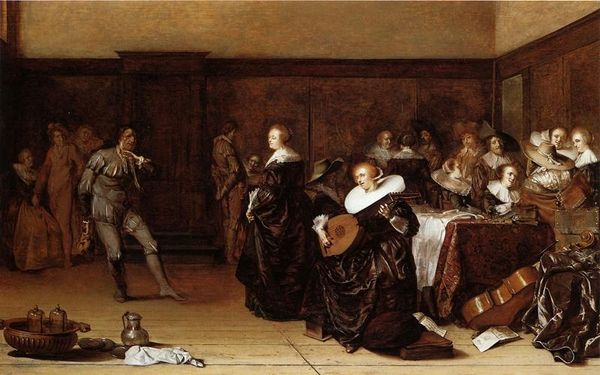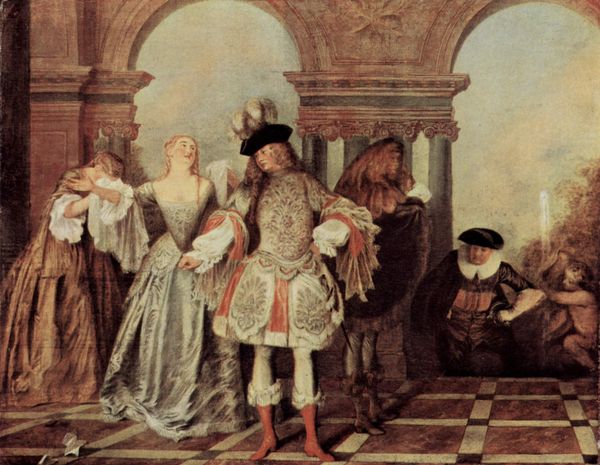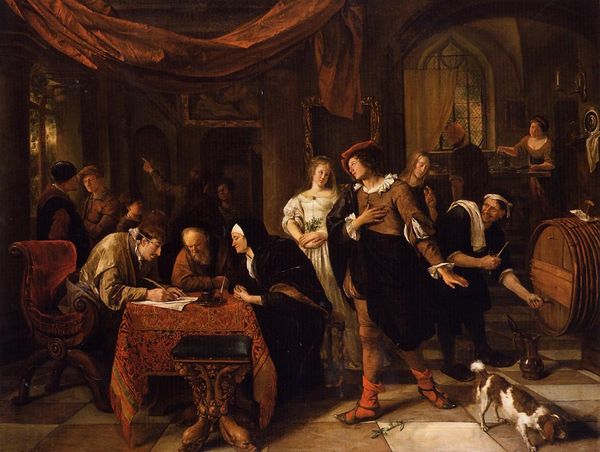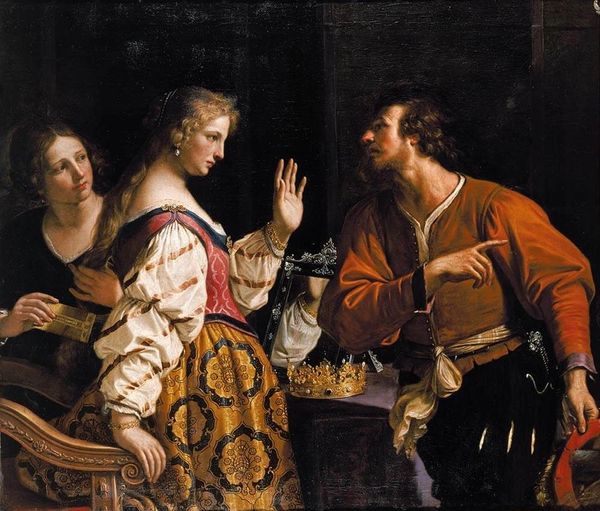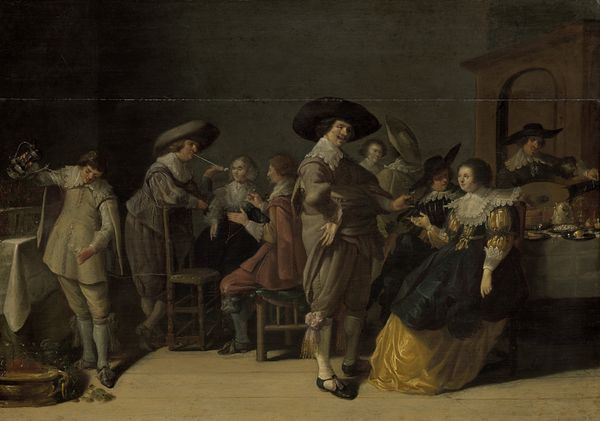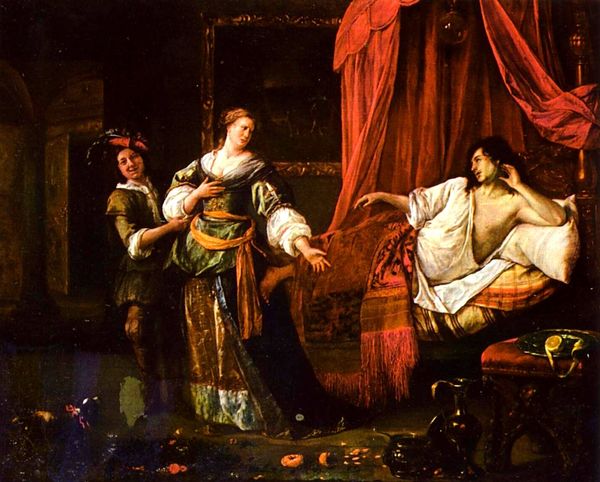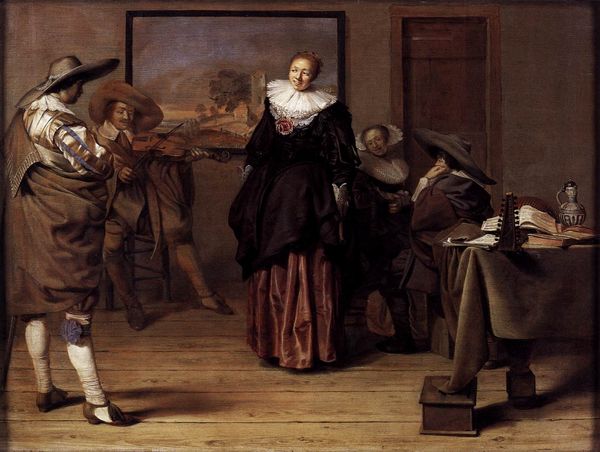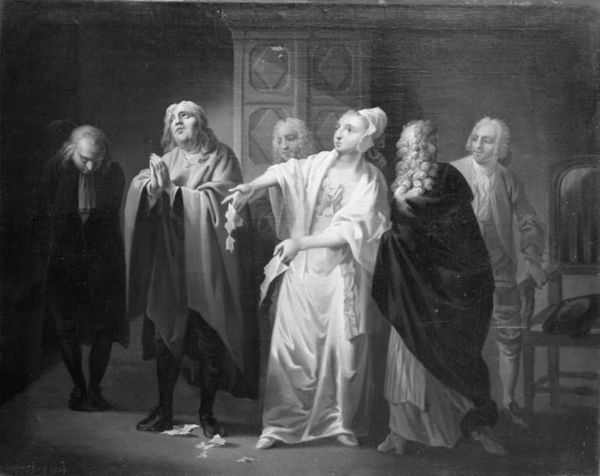
painting, oil-paint
#
narrative-art
#
baroque
#
dutch-golden-age
#
painting
#
oil-paint
#
group-portraits
#
genre-painting
Copyright: Public domain
Editor: Here we have Willem Duyster's "A Musical Party" from 1634. The artist employed oil paint in creating this work. The shimmering textures and opulent costumes suggest a world of leisure, but also perhaps hints at something else going on beneath the surface. How might we unpack what’s really being presented here? Curator: Look at the materials themselves: oil paint, pigments sourced and mixed, costly fabrics meticulously rendered. Duyster is documenting, perhaps unwittingly, the very infrastructure of Dutch Golden Age wealth, focusing less on who owns it and more on how that wealth presents, moves, and creates society through labor. What's created, who's participating and profiting, and what activities are enabled as a result of material means and production? Editor: So, you're suggesting the painting isn't just about a musical gathering but also speaks to the socio-economic context of its time, with its specific means and availability of production? How would we connect labor to an image showing music, and entertainment? Curator: Consider the clothing, the instruments: all these require craft, skilled artisans, global trade networks bringing raw materials. Even the room itself, with its patterned wallpaper, testifies to a network of labor and industry. The performance shown here becomes possible through those processes, which may even mirror similar power dynamics shown among the leisure class presented. Does the very act of leisurely activity further establish its power dynamic through material status? Editor: I never considered analyzing it from that angle. Thinking about all the hands involved beyond just the artist really changes my perception. Thank you for broadening my interpretation with a materialist perspective. Curator: Absolutely! It's crucial to acknowledge the layers of production and consumption woven into every brushstroke. Material and the creation processes say as much, if not more, than the traditional narrative and style labels.
Comments
No comments
Be the first to comment and join the conversation on the ultimate creative platform.
